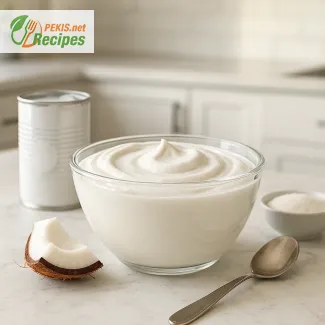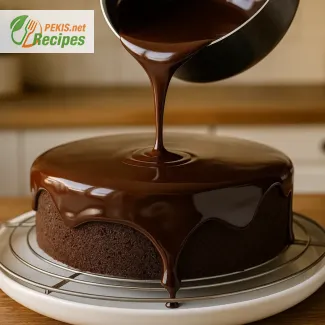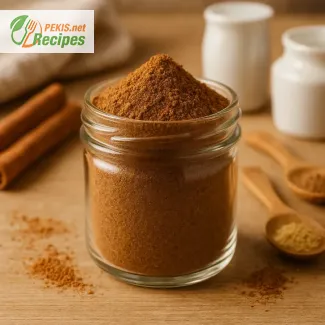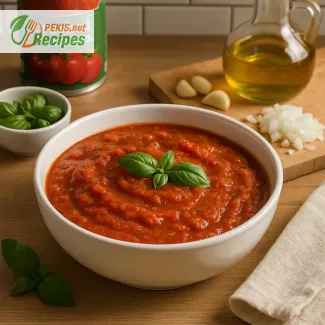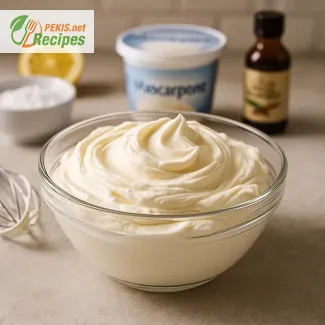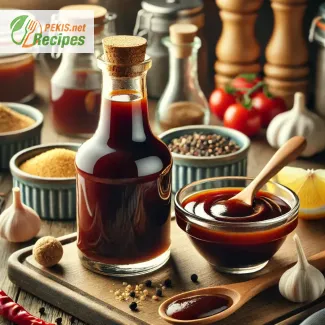
The Ultimate Guide to Making Authentic Worcestershire Sauce at Home
The History and Unique Flavor of Worcestershire Sauce
Worcestershire sauce is one of those iconic condiments that has stood the test of time. With its complex balance of umami, tanginess, and subtle sweetness, this sauce has become a staple in many kitchens around the world. Originally created in the 19th century in England, Worcestershire sauce was a result of an unexpected fermentation experiment that led to a deeply flavorful liquid, now loved globally.
This legendary sauce is known for its ability to enhance meats, marinades, dressings, and even cocktails like the classic Bloody Mary. Its signature fermented richness, derived from ingredients such as vinegar, tamarind, molasses, and anchovies, makes it an irreplaceable component in many recipes.
But what if you could recreate this bold, umami-packed sauce in your own kitchen? A homemade Worcestershire sauce not only gives you full control over the ingredients but also allows for customizations to match your taste preferences.
Why Make Worcestershire Sauce from Scratch?
Store-bought Worcestershire sauce is convenient, but homemade versions offer superior depth of flavor and the satisfaction of crafting a truly authentic condiment. Here are some compelling reasons to try making it yourself:
1. No Artificial Additives
Many commercial Worcestershire sauces contain preservatives, stabilizers, and high-fructose corn syrup. By making it at home, you ensure that every ingredient is fresh and natural.
2. Customizable Flavor
Do you prefer a sweeter, spicier, or tangier version? Homemade Worcestershire sauce lets you adjust the balance of vinegar, molasses, and spices to create a blend that perfectly suits your taste.
3. Dietary Flexibility
If you have dietary restrictions, you can tailor your Worcestershire sauce by making it vegan, gluten-free, or low-sodium. Store-bought brands often contain fish-based ingredients and wheat-derived soy sauce, which may not work for everyone.
4. Depth of Fermented Goodness
Fermentation is the secret behind the intense depth of traditional Worcestershire sauce. While commercial brands often cut corners by using artificial flavor enhancers, a homemade recipe allows the ingredients to naturally develop bold, savory notes over time.
Key Ingredients That Define Worcestershire Sauce
The magic of Worcestershire sauce lies in its intricate blend of flavors. While variations exist, certain core ingredients are essential in achieving its distinct taste:
Vinegar – The Tangy Backbone
Vinegar provides the signature sharp acidity that balances the sauce. Most recipes use malt vinegar or apple cider vinegar, contributing both tang and complexity.
Tamarind – The Secret to Authentic Depth
Tamarind paste gives Worcestershire sauce its unique sweet-sour complexity. It adds a fruity, slightly caramelized undertone that enhances the overall balance of flavors.
Anchovies – The Umami Powerhouse
A crucial component in traditional Worcestershire sauce, anchovies contribute an intense, salty depth of umami. If you're making a vegan alternative, fermented miso paste or soy sauce can serve as excellent substitutes.
Molasses – Sweetness with a Robust Edge
Molasses adds a dark, slightly smoky sweetness that complements the acidity of vinegar and tamarind. It helps round out the flavor, preventing the sauce from being overly sour.
Spices and Aromatics – The Layered Complexity
A blend of garlic, onion, mustard seed, clove, and black pepper gives Worcestershire sauce its signature warmth and aromatic complexity. Some variations also include chili peppers for an added kick.
How Worcestershire Sauce Elevates Your Cooking
Once you've mastered the art of making homemade Worcestershire sauce, you'll find it to be an indispensable ingredient in your kitchen. Here’s how it can transform your dishes:
Marinades and Meat Glazes
Its deep umami richness makes Worcestershire sauce a fantastic marinade for steaks, chicken, and pork. It tenderizes meats while infusing them with savory complexity.
The Secret Ingredient in Soups and Stews
A small splash of Worcestershire sauce can intensify the depth of broths, gravies, and slow-cooked stews. It seamlessly blends into beef bourguignon, French onion soup, and hearty chili.
A Bold Touch to Dressings and Sauces
Add a few drops to Caesar salad dressing, barbecue sauce, or even mayonnaise-based dips for an extra dimension of tangy richness.
A Game-Changer in Cocktails
Worcestershire sauce is a key player in the famous Bloody Mary. Its savory-salty profile adds the perfect umami contrast to tomato juice and vodka.
Storing and Aging Your Homemade Worcestershire Sauce
The beauty of homemade Worcestershire sauce is that its flavors continue to develop over time. Here’s how to ensure the best storage:
- Refrigerate after preparation to allow the ingredients to meld together.
- Use a glass bottle or airtight container to preserve its potency and prevent unwanted reactions.
- For deeper intensity, let it age for at least two weeks before using it.
Creating your own Worcestershire sauce at home is a rewarding culinary experience that enhances your dishes with authentic, well-balanced flavors. Whether you're marinating meats, perfecting dressings, or crafting the ultimate Bloody Mary, a homemade version of this classic sauce will elevate your cooking in ways store-bought alternatives simply can't.
Now that you're inspired, it’s time to dive into the step-by-step recipe and start making your very own flavor-packed Worcestershire sauce from scratch!
- In a small saucepan, combine vinegar, molasses, soy sauce, tamarind paste, and water over medium heat. Stir until well blended.
- Add brown sugar, garlic, onion powder, cloves, cinnamon, black pepper, ginger, mustard powder, and salt to the saucepan. Stir to dissolve the sugar.
- Mix in anchovy paste and lemon juice, ensuring all ingredients are evenly incorporated.
- Bring the mixture to a gentle simmer and reduce the heat to low. Let it cook for 10-15 minutes, stirring occasionally.
- Once the sauce thickens slightly, remove from heat and allow it to cool.
- Strain the mixture through a fine sieve to remove any solid particles for a smoother texture.
- Transfer the sauce into a sterilized glass bottle or jar and refrigerate for at least 24 hours before use to develop flavors.
- Shake well before using. The sauce can be stored in the refrigerator for up to 3 months.
Elevating the Classic Worcestershire Sauce Recipe
The Key to a More Robust and Balanced Flavor
Homemade Worcestershire sauce offers a depth of flavor that surpasses many store-bought versions. While the traditional recipe already provides a rich umami profile, small adjustments can enhance its complexity, bringing out the best in each ingredient. By experimenting with different sweet, sour, spicy, and savory elements, you can achieve a sauce that is tailored to your personal taste and perfect for a variety of dishes.
The Power of Ingredient Substitutions
Enhancing Umami Depth
A key characteristic of Worcestershire sauce is its umami-rich profile. If you want to amplify this depth, consider these adjustments:
- Anchovy Paste vs. Miso Paste: If you’re looking for a deeper, more natural umami flavor, try adding a teaspoon of miso paste. This substitution not only provides a fermented richness but also enhances the overall savory complexity.
- Soy Sauce vs. Fish Sauce: While soy sauce brings a salty depth, fish sauce adds a briny, bold character that can create a more authentic and punchy taste. A few drops of fermented black bean paste can also boost the umami profile.
- Mushroom Powder or Dried Porcini: If you want a vegetarian-friendly umami booster, a small amount of ground dried mushrooms will provide the same earthy depth as anchovies.
Adjusting the Sweetness Level
Balancing sweetness is essential to Worcestershire sauce. The molasses and brown sugar combination is traditional, but other ingredients can refine the taste:
- Maple Syrup: If you prefer a more caramelized, natural sweetness, swap out molasses for maple syrup. It gives a lighter yet still complex sweetness.
- Date Syrup or Honey: For a healthier alternative, date syrup or honey can reduce refined sugar content while maintaining a rich, natural sweetness.
Adding a Touch of Spice
For those who enjoy a spicy kick, Worcestershire sauce can be customized with heat:
- Smoked Paprika or Chipotle Powder: Adding a touch of smoked spice will give the sauce a barbecue-like depth, ideal for grilling marinades.
- Cayenne or Hot Chili Powder: A small pinch of cayenne pepper will intensify the sauce’s peppery warmth without overpowering its complex taste.
The Benefits of Making Worcestershire Sauce at Home
Control Over Ingredients
Unlike store-bought versions that often contain preservatives, artificial flavors, and excessive sodium, homemade Worcestershire sauce lets you control the quality of ingredients. This means:
- No unnecessary additives
- Adjustable sodium and sugar levels
- Fresher, more natural flavors
Customization Based on Dietary Preferences
- Vegan Worcestershire Sauce: Replace anchovies with kombu (seaweed) or fermented tamari for a plant-based alternative.
- Low-Sodium Version: Reduce the amount of soy sauce and salt, or replace it with coconut aminos for a milder taste.
Avoiding Common Mistakes
Even though Worcestershire sauce is relatively easy to prepare, certain missteps can lead to an unbalanced or unpleasant flavor:
- Overpowering Acidity: Vinegar is essential, but too much can make the sauce overly sharp. To fix this, balance it with a small amount of additional sweetener.
- Not Allowing the Sauce to Mature: Letting the sauce sit for at least 24 hours in the fridge allows flavors to meld, resulting in a smoother, more complex taste.
- Skipping the Straining Step: If you want a silky, restaurant-quality consistency, strain the sauce to remove solid bits of garlic and spices.
Healthier Alternatives to Traditional Worcestershire Sauce
For those looking for a health-conscious version, consider these tweaks:
- Reduce Sugar Content: Using monk fruit sweetener, coconut sugar, or stevia instead of brown sugar helps reduce added sugars while maintaining sweetness.
- Low-Sodium Option: Replace soy sauce with a low-sodium alternative like coconut aminos to cut down on sodium while keeping the umami richness.
- Fermented Ingredients for Gut Health: Using fermented soy products or kombucha vinegar instead of malt vinegar boosts probiotics, promoting better digestion.
Making It Your Own
By making small adjustments, you can fine-tune Worcestershire sauce to match your taste preferences. Whether you want a bolder, spicier version, a smoother, milder take, or a healthier homemade alternative, personalizing this classic sauce ensures you’ll always have the perfect ingredient for your favorite recipes.
- Contains soy (soy sauce) and fish (anchovy paste).
- Gluten warning: If using regular soy sauce, it contains gluten.
- To make it gluten-free, substitute soy sauce with tamari sauce or coconut aminos.
- To make it vegan, replace anchovy paste with seaweed (kombu or nori) or miso paste.
- Vitamin C – Boosts immune system and collagen production.
- Iron – Supports red blood cell formation.
- Potassium – Regulates fluid balance and muscle function.
- Magnesium – Supports nerve function and energy production.
- Polyphenols from vinegar and tamarind aid in reducing inflammation.
- Flavonoids from garlic and onion improve heart health.
- Capsaicin from chili flakes may boost metabolism.
- Vitamin C helps in neutralizing free radicals.

